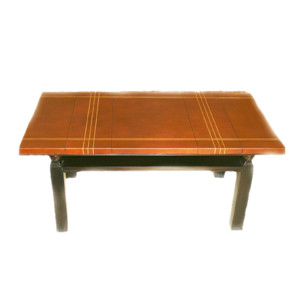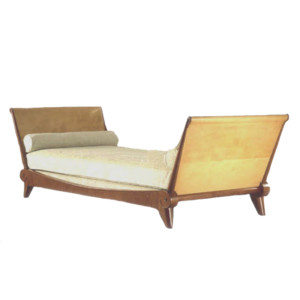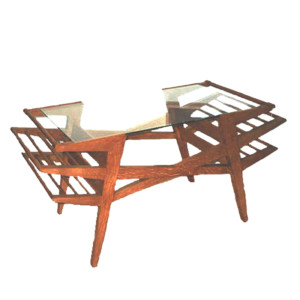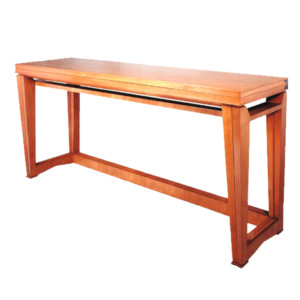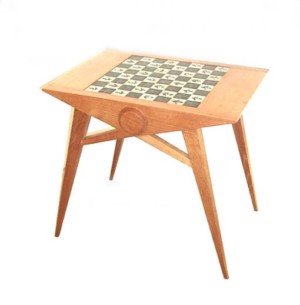(1910 – 1991)
Maxime Old was born December 13, 1910 in Maisons-Alfort, a suburb of Paris, and was the son and grand-son of fine cabinetmakers on the Faubourg St. Antoine, which was, and still is, the section of Paris devoted to this trade. It is interesting to note that many furniture makers and jewelers came from families that had been in the business for generations, and succeeded in helping the family business survive by injecting fresh ideas.
It was Maxime’s mother who pushed her son to become part of the family business, and move it firmly into modern times, so while Maxime’s background gave him a keen sense of tradition, his furniture was, finally, anything but “traditional”. Like many other designers of his time who were born into families with several generations as cabinetmakers behind them, he made some use of traditional forms, but gave them a very modern and distinctive treatment.
Maxime, urged on by his mother, spent four years at the esteemed Ecole Boulle, a rigorous institution that taught all aspects of furniture design and fine craftsmanship. He was a very apt student, and learned everything necessary to design and produce beautiful furniture, but had already been designing furniture when he was only in his 20’s. While at the École Boulle, his talent was soon recognized by school’s director, the highly influential André Fréchet, who helped establish Old as one of the leading talents of mid-century French design. Maxim’s training and background enabled him to produce his designs using the finest craftsmanship.
Old joined the renowned designer and decorator Emile-Jacques Ruhlmann, and worked with him until 1934. His time with Ruhlmann taught him much about luxury and fine design, but his esthetic was different from that of his mentor, and the designs that he subsequently went on to produce are very distinctly his own. Old’s furniture was sleek and modern, usually devoid of surface embellishments, and very pure and sculptural. His work was, in many ways, ahead of his time.
Old was very concerned with functionalism – the pieces should suit their purpose flawlessly, and be comfortable – after all – comfort is, indeed, a luxury. He added luxury to his pieces by using rare and costly woods, but he also made use of more accessible woods, such as oak, cherry, ash and walnut. His esthetic was for furniture with perfect proportions, clean, elegant lines, often subtly angled, and perhaps enhanced with bronze accents or fittings.
Many of his pieces perform several functions, such as a console that can open into a dining table, or leather covered wall panels that could drop down to form a desk. He was very inventive, and also very successful.
Maxime Old was well recognized and rewarded for his talents. To mention just some of his accolades, he was Vice-President of the Society of Artist – Decorators, a professor of Design at the Art and Technique Center of the Central Union of Decorative Arts, Professor of Design at the École National Supérieure for Technical Education, Lecturer at the esteemed École des Arts Décoratifs. He was also a regular participant in the Salon d’Autumn.
The leading and influential design periodicals – Art et Decoration and Le décor d’aujourd’hui were constantly publishing examples of his work and singing his praises. The Mobilier Nationale commissioned him to design pieces for the City Hall in Paris, and the Ministry of France for their offices in The Hague and Helsinki. In addition to many private and government commissions, he worked on the interiors of several ocean liners, including the Atlantic and the Ile de France. He also designed facilities and private homes all over the world.
Maxime Old continued designing and producing beautiful furniture until his death in 1991. His pieces are in high demand for their elegance and functionality, qualities that allow his pieces to work well with almost any décor.
Showing all 5 results
-
$0.00
-
$0.00


